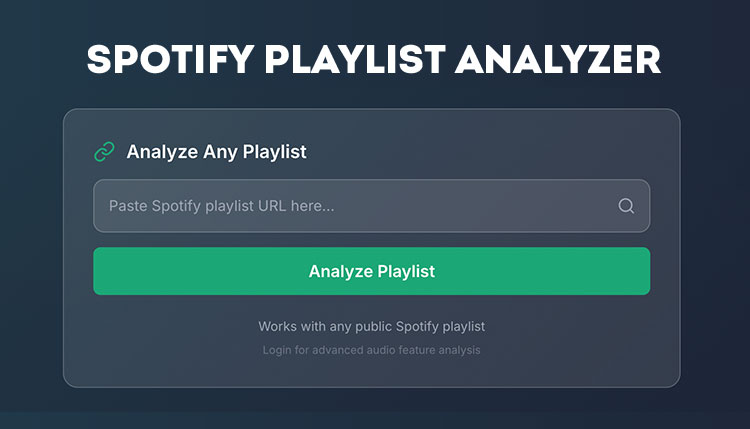
Spotify Playlist Analyzer : Get Insights Into Any Spotify Playlist
Unlock deep insights into any Spotify playlist with our advanced analytics engine. Analyze mood patterns,
Ever tried playing your favorite song only to realize you’re rushing the beat or dragging behind?
You’re not alone!
The majority of musicians struggle with consistent timing, making a reliable metronome one of the most essential tools in any musician’s arsenal.
Whether you’re a beginner learning your first scales or a seasoned performer preparing for a concert, an online metronome can transform your practice sessions and elevate your musical performance.
Gone are the days of clunky physical metronomes that you had to wind up – today’s digital solutions offer incredible flexibility, convenience, and features that would make even the most traditional music teachers smile.
An online metronome is basically your musical timing coach that lives right in your web browser.
Unlike those old-school wind-up devices that your grandmother probably had sitting on her piano, digital metronomes bring a whole new level of precision and convenience to rhythm practice.
Think of it as having a super-reliable drummer who never gets tired, never speeds up when they’re excited, and never slows down when they’re bored.
The beauty of browser-based timing tools lies in their accessibility – no need to hunt down a physical device or download sketchy apps that eat up your phone’s storage.
Musicians often underestimate how much their internal clock drifts during practice sessions.
Research from the University of Texas found that even professional musicians can drift up to 15 BPM during a single practice session without realizing it.
That’s like starting a moderate walking pace and accidentally breaking into a light jog!
Here’s where an online metronome becomes your secret weapon:
The science behind metronome practice is pretty fascinating too.
Neuroscientists have discovered that regular rhythm training actually strengthens neural pathways in the brain, particularly in areas responsible for motor coordination and auditory processing.
It’s like CrossFit for your musical brain!
Digital timing tools also eliminate the common excuses that musicians make for skipping metronome practice.
Can’t find your metronome? No problem – your laptop’s got you covered.
Battery died? Not an issue with online tools.
Need a specific tempo that your mechanical metronome can’t hit? Digital precision has your back.
Plus, modern online metronomes offer features that would have blown the minds of musicians from previous generations – visual feedback, customizable sounds, complex time signatures, and subdivision options that make practicing polyrhythms actually manageable.
Shopping for the perfect online metronome can feel a bit overwhelming with all the options out there.
But here’s the thing – not all digital timing tools are created equal, and knowing what features actually matter can save you tons of frustration down the road.
First up, let’s talk about BPM range and precision.
A decent online metronome should handle everything from funeral-march slow (around 40 BPM) to blazing-fast technical passages (pushing 200+ BPM).
Some musicians need even more extreme ranges – think meditation music or death metal – so having that 20-300 BPM sweet spot gives you room to grow.
Visual indicators are way more important than most people realize.
Sure, the audio click is essential, but having a visual pulse helps tremendously, especially in noisy practice environments or when you’re working on complex rhythmic patterns.
Look for metronomes with clear, bright visual feedback that you can actually see from across the room.
Sound variety isn’t just about personal preference – different sounds work better for different instruments and practice situations.
Here’s what you should look for:
Subdivision capabilities separate the amateur tools from the professional-grade options.
Being able to hear eighth notes, triplets, or sixteenth notes between the main beats opens up a whole world of rhythmic possibilities.
It’s like having training wheels for complex rhythms – you can gradually remove the subdivisions as your internal timing improves.
Mobile responsiveness is absolutely crucial in today’s world.
Your online metronome should work just as smoothly on your phone as it does on your desktop computer.
Touch-optimized controls make all the difference when you’re trying to adjust tempo quickly during practice.
Tap tempo functionality is one of those features you don’t think you need until you try it.
Sometimes you hear a song and want to match that exact groove – being able to tap out the tempo and have your metronome lock onto it instantly is pure magic.
Finally, look for keyboard shortcuts and user-friendly interface design.
When you’re in the zone practicing, the last thing you want is to fumble around with tiny buttons or confusing menus.
The best online metronomes let you control everything with simple keyboard commands – spacebar to start and stop, arrow keys to adjust tempo, that sort of thing.
Alright, let’s cut to the chase – finding a truly professional-grade online metronome that doesn’t cost you a dime can feel like searching for a unicorn.
But here’s the good news: there’s actually a standout option that delivers everything serious musicians need without any of the usual compromises.
This particular online metronome brings together professional features with an interface that’s so intuitive, even your technologically-challenged uncle could figure it out in about thirty seconds.
The precision timing covers everything from meditative 20 BPM all the way up to face-melting 300 BPM speeds.
That range handles everything from ambient music to the fastest technical passages you’ll ever encounter.
What really sets this tool apart is the dynamic particle visualizer – imagine watching tiny digital fireworks that pulse perfectly in sync with each beat.
It’s not just eye candy either; this visual feedback genuinely helps with timing, especially when you’re working on complex rhythmic patterns or playing in loud environments.
The sound options are where things get really impressive:
Time signature support goes way beyond the basic 4/4 that most free tools offer.
This metronome handles everything from simple 2/4 patterns up to complex 8/16 time signatures, with customizable accent patterns that help you feel the musical pulse rather than just counting beats.
The subdivision features are honestly game-changing for developing rhythmic skills.
You can practice with eighth notes, triplets, or sixteenth notes filling the spaces between main beats – it’s like having a rhythm teacher showing you exactly where every note should land.
Tap tempo works flawlessly too.
Just tap your desired rhythm a few times, and boom – the metronome locks onto that exact tempo.
Perfect for matching songs or capturing those elusive groove feelings that are hard to quantify with numbers.
The preset buttons (60, 80, 100, 120, 140, 160 BPM) cover all the most common practice tempos, making it super quick to jump between different exercises.
Volume controls are surprisingly sophisticated – separate adjustments for main beats and accented beats mean you can create subtle or dramatic emphasis patterns depending on what you’re practicing.
Mobile functionality is absolutely flawless.
The touch-optimized interface works just as smoothly on smartphones and tablets as it does on desktop computers.
No weird lag, no tiny buttons that are impossible to hit – just clean, responsive controls that work the way you’d expect.
Keyboard shortcuts make desktop practice sessions incredibly efficient.
Spacebar starts and stops the metronome, arrow keys adjust tempo, and everything responds instantly without any weird delays.
The settings persistence feature means your preferences stick around between practice sessions – no need to reconfigure everything every time you open your browser.
Perhaps best of all, this tool works completely offline once it’s loaded, requires zero downloads, and doesn’t bombard you with ads or distracting pop-ups.
Using a metronome effectively is like learning to drive – everyone thinks they know how to do it until they actually try to get good at it.
Most musicians just crank up the tempo and hope for the best, but that’s basically like trying to learn to drive by immediately hopping on the highway.
The secret sauce starts with finding your baseline tempo.
Pick a piece you know pretty well and try playing it without any metronome at all.
Now turn on your online metronome and see how close you were to a steady tempo – you might be surprised by how much your speed fluctuates naturally.
Start ridiculously slow, even if it feels boring.
If you can normally play something at 120 BPM, drop it down to 80 or even 60 BPM with the metronome.
This isn’t about being able to play fast – it’s about building rock-solid timing that won’t fall apart under pressure.
Here’s a step-by-step approach that actually works:
The subdivision feature is where the magic really happens.
Instead of just hearing quarter notes, turn on eighth note subdivisions and suddenly you understand exactly how your sixteenth note runs should align with the beat.
It’s like having X-ray vision for rhythm.
Progressive tempo training is the key to actually improving rather than just maintaining your current skill level.
Find a tempo or BPM that is comfortable for you. You can listen to existing songs that you think might work or use an online tempo tapper to find your groove.
Spend about 5-10 repetitions at each tempo before bumping it up by 5-10 BPM.
If you start making mistakes or feeling tense, drop back down to a comfortable speed.
There’s no prize for rushing through tempo increases.
One technique that drives people crazy but works incredibly well is the “metronome dropout” method.
Play along with the metronome for eight bars, then turn it off for eight bars, then back on again.
This trains your internal clock and reveals whether you’re actually internalizing the tempo or just following along mindlessly.
Accent patterns deserve special attention too.
Instead of every beat sounding the same, set up accents that match the natural musical phrase structure of what you’re playing.
This helps develop musical phrasing rather than just mechanical timing.
Common mistakes include starting too fast, ignoring subdivision accuracy, and treating the metronome as background noise rather than an active practice partner.
The metronome should feel like playing with another musician – you’re listening, responding, and staying connected to the pulse.
Remember, the goal isn’t to become a metronome yourself – it’s to develop such solid internal timing that you can play expressively while maintaining rhythmic integrity.
Every instrument has its own quirky relationship with timing, and smart musicians adapt their metronome practice accordingly.
Piano players, for instance, have the luxury of seeing all their notes laid out in front of them, which makes metronome work both easier and more complex at the same time.
For piano practice, start with simple scales hands separately before tackling anything fancy.
The key is making sure both hands can lock into the metronome independently before trying to coordinate them together.
Use accent patterns that match the natural stress patterns of scales – typically accenting beats 1 and 3 in 4/4 time.
Guitarists face different challenges since they’re dealing with both rhythm and lead playing styles.
Strumming patterns benefit hugely from subdivision practice – turn on those eighth note clicks and suddenly complex strumming patterns start making sense.
For lead guitar work, practice scales and licks with the metronome set to accent just beat 1, which helps develop that crucial sense of “where’s home” in musical phrases.
Here’s what works best for different instruments:
Drummers have perhaps the most complex relationship with metronomes since they ARE the rhythm section.
Start with just kick drum on beats 1 and 3, snare on 2 and 4, with the metronome providing quarter note clicks.
Once that feels solid, switch the metronome to just accent beat 1 – this develops the ability to maintain tempo without constant external reference.
Bass players need to think about both rhythmic precision and melodic flow.
Practice simple bass lines with the metronome clicking on all four beats, then gradually reduce to just beats 1 and 3, then just beat 1.
This progression builds independence while maintaining groove.
Vocalists often overlook metronome practice, but timing is just as crucial for singers as for instrumentalists.
Use softer metronome sounds like woodblock or quiet electronic beeps that won’t interfere with your ability to hear pitch.
Practice breathing exercises with the metronome to develop rhythmic breath control.
Wind instrument players need to coordinate breathing with timing, which adds another layer of complexity.
Practice long tones with the metronome to develop steady air support, then work on scales and etudes where breathing points align with strong beats.
String players deal with bow changes and fingering coordination.
Start with simple bow exercises – whole notes, half notes, quarter notes – all perfectly aligned with metronome clicks.
The physical motion of bowing needs to become second nature before adding complex fingering patterns.
Ensemble playing benefits enormously from individual metronome practice.
When everyone in the group has solid internal timing, the ensemble locks together naturally instead of everyone fighting to establish their own tempo.
Once you’ve mastered basic metronome skills, it’s time to dive into some seriously next-level techniques that separate good musicians from great ones.
Polyrhythm practice is where things get really interesting – and really challenging.
Think of polyrhythms as musical puzzles where different rhythmic patterns layer on top of each other.
Start simple: set your metronome to a steady quarter note pulse, then practice playing three notes evenly spaced against every two metronome clicks.
This 3-against-2 polyrhythm is the gateway drug to more complex rhythmic relationships.
Metric modulation techniques use the metronome as a bridge between different tempos within the same piece.
Let’s say you’re playing something that goes from 120 BPM in 4/4 time to a section that feels like 180 BPM in 3/4 time.
The trick is finding the mathematical relationship – in this case, the quarter note of the first section becomes the dotted quarter of the second section.
Complex time signatures become much more manageable with strategic accent programming.
Instead of trying to count “1-2-3-4-5-6-7” in 7/8 time, set up accent patterns that break it into familiar chunks like “1-2-3-4, 1-2-3” or “1-2-3, 1-2-3-4.”
Here are some advanced techniques that really work:
The “dropping out” technique becomes even more sophisticated at advanced levels.
Try playing with the metronome for four measures, then turn it off for eight measures, then back on for two measures.
This irregular pattern forces you to develop bulletproof internal timing rather than just following along passively.
Rhythmic displacement is a mind-bending technique where you take familiar patterns and start them on different beats of the measure.
Take a simple scale run that normally starts on beat 1, and practice starting it on beat 2, then beat 3, then the “and” of beat 1.
Your brain will hate this at first, but it develops incredible rhythmic flexibility.
Subdivision shifting keeps your practice interesting and builds serious chops.
Play the same melody with straight eighth notes, then swing eighth notes, then as triplets, then as sixteenth notes.
Each subdivision creates a completely different musical character while maintaining the same basic melodic content.
Recording your practice sessions with the metronome running reveals timing issues that you might not notice in real-time.
Most smartphones can handle basic recording, and listening back objectively shows exactly where your timing drifts or rushes.
The “gradient tempo” method involves practicing challenging passages with extremely small tempo increases – like 2-3 BPM at a time instead of the usual 5-10 BPM jumps.
This builds speed so gradually that your technique stays clean throughout the entire tempo range.
Eventually, the goal is developing such strong internal timing that you can play expressively – speeding up and slowing down for musical effect – while maintaining an underlying rhythmic framework that keeps everything together.
Even the best online metronomes can occasionally act up, and knowing how to troubleshoot common problems can save your practice session from turning into a tech support nightmare.
Audio latency is probably the most frustrating issue musicians face with digital timing tools.
You click the start button, but there’s a noticeable delay before the metronome sound actually begins – or worse, the clicks don’t line up with the visual indicators.
This usually stems from your browser’s audio processing or your computer’s sound system trying to do too many things at once.
Close unnecessary browser tabs and applications that might be hogging your computer’s processing power.
Chrome tends to handle audio timing better than Safari or Firefox for most metronome applications, so switching browsers might solve persistent latency issues.
Browser compatibility problems show up in weird ways – maybe the tempo slider doesn’t respond smoothly, or certain features just don’t work at all.
Clearing your browser cache and cookies often fixes these glitches, though it means you’ll lose saved settings in some cases.
Mobile device audio settings can be particularly tricky since phones and tablets handle audio differently than desktop computers.
Make sure your device isn’t in silent mode (seems obvious, but it happens more than you’d think), and check that your browser has permission to play audio.
Here’s a quick troubleshooting checklist:
Internet connection requirements vary depending on the specific metronome tool you’re using.
Most well-designed online metronomes load completely into your browser’s memory, which means they’ll keep working even if your internet connection drops out mid-practice.
However, if you’re constantly refreshing the page or opening new browser windows, you’ll need a stable connection to reload the application.
Offline alternatives become crucial when you’re practicing somewhere with spotty internet – like that basement rehearsal space with terrible Wi-Fi.
Some online metronomes can be saved as bookmarks that work offline, while others offer downloadable versions or companion apps.
Audio driver conflicts on Windows computers sometimes cause clicking sounds or irregular timing.
Try adjusting your computer’s audio sample rate to 44.1 kHz or 48 kHz, which tends to work better for music applications than higher sample rates.
Mac users occasionally run into issues with multiple audio interfaces or built-in audio enhancement features interfering with metronome timing.
Turning off spatial audio and other audio processing features usually resolves these problems.
Performance optimization becomes important during long practice sessions.
Browsers can start using more memory over time, which might cause timing to become less precise or the interface to respond more slowly.
Refreshing the page every hour or so during extended practice sessions keeps everything running smoothly.
Having backup options ready prevents technology failures from derailing your practice routine completely.
Keep a simple metronome app installed on your phone, or know how to count time signatures manually if all else fails.
The show must go on, even when the tech doesn’t cooperate perfectly.
Mastering musical timing doesn’t have to be a struggle anymore!
With the wealth of free online metronome tools available today, you have everything you need to develop rock-solid rhythm and impeccable timing.
Remember, consistency is key – even just 10 minutes of focused metronome practice daily can dramatically improve your musical abilities within weeks.
Start with a comfortable tempo, gradually increase the speed, and don’t forget to practice with different subdivisions and accent patterns.
Your future self (and your fellow musicians) will thank you for investing in this fundamental skill.
The techniques we’ve covered work for musicians at every level, from complete beginners just learning their first scales to advanced players working on complex polyrhythms and metric modulations.
Take the time to experiment with different approaches and find what works best for your specific instrument and musical goals.
Whether you’re preparing for auditions, working on ensemble pieces, or just trying to tighten up your overall musicianship, consistent metronome practice will make a noticeable difference in your playing.
Don’t be afraid to start slow and build gradually – the musicians who develop the strongest timing are usually the ones who prioritize accuracy over speed during their practice sessions.
Ready to transform your musical journey?
Pick your favorite online metronome from our recommendations above and start practicing today!
A metronome is a musical timing device that produces regular, steady beats to help musicians maintain consistent tempo while practicing or performing.
Traditional metronomes are mechanical devices with a swinging pendulum, but modern digital and online metronomes use electronic audio signals to create precise timing clicks.
The beats are measured in BPM (beats per minute), and metronomes typically range from very slow tempos around 40 BPM to extremely fast tempos over 200 BPM.
Musicians use metronomes to develop internal timing, practice difficult passages at controlled speeds, and ensure steady rhythm during ensemble playing.
To use a metronome effectively, start by setting a comfortable tempo that’s slower than your normal playing speed.
Begin with simple exercises like scales or basic rhythms, focusing on making each note align perfectly with the metronome clicks.
Gradually increase the tempo by 5-10 BPM only after the slower speed feels completely comfortable and effortless. Use subdivisions (eighth notes, triplets, sixteenth notes) to understand exactly where each note should fall within the beat.
Practice turning the metronome on and off periodically to develop internal timing, and always prioritize accuracy over speed during practice sessions.
The best online metronome offers professional-grade features including precise timing from 20-300 BPM, multiple sound options (woodblock, click, cowbell, electronic beep), visual feedback with particle visualization, customizable time signatures, subdivision capabilities, tap tempo functionality, and mobile-responsive design.
Look for tools that work offline once loaded, include keyboard shortcuts for easy control, offer accent patterns for different time signatures, and provide both volume control and settings persistence.
The ideal online metronome should be free, ad-free, require no downloads, and work seamlessly across all devices and browsers.
No, the best online metronomes work entirely within your web browser without requiring any downloads or installations.
These browser-based tools load directly from websites and function immediately without taking up storage space on your device.
Many online metronomes also work offline once initially loaded, meaning you can continue practicing even if your internet connection is interrupted.
This makes online metronomes incredibly convenient compared to downloadable apps or traditional physical metronomes.
Yes, modern online metronomes are designed with responsive interfaces that work perfectly on smartphones and tablets.
Touch-optimized controls make it easy to adjust tempo, change time signatures, and start or stop the metronome using your phone’s touchscreen.
Mobile browsers handle audio timing well, and many online metronomes include features specifically designed for mobile practice sessions, such as larger buttons and simplified interfaces that work well on smaller screens.
Beginners should start with slow, comfortable tempos between 60-80 BPM for basic exercises and scales.
This range allows time to focus on proper technique, finger placement, and note accuracy without feeling rushed.
Even if you can play a piece faster without a metronome, always start metronome practice at least 20-30 BPM slower than your comfortable playing speed.
Gradually increase the tempo by small increments (5-10 BPM) only after achieving clean, effortless playing at the slower speed.
Subdivisions are additional clicks that occur between the main beats, helping musicians understand exactly where smaller note values should be placed within each beat.
Common subdivisions include eighth notes (2 clicks per beat), triplets (3 clicks per beat), and sixteenth notes (4 clicks per beat).
Practicing with subdivisions helps develop precise timing for complex rhythmic patterns and ensures that fast runs, ornaments, and intricate passages align correctly with the underlying pulse.
Subdivisions act like rhythmic training wheels that can be gradually removed as internal timing improves.
Set your metronome volume loud enough to hear clearly over your instrument but not so loud that it becomes distracting or uncomfortable.
The metronome should provide a steady reference without overpowering your musical expression.
Many musicians prefer to start practice sessions with the metronome slightly louder, then gradually reduce the volume as their internal timing improves.
For acoustic instruments, the metronome typically needs to be louder than for electric instruments where you can adjust the instrument volume independently.
Accent patterns emphasize certain beats within a measure to help musicians feel the natural musical pulse and phrasing.
In 4/4 time, accents typically fall on beats 1 and 3, while 3/4 time usually accents just beat 1.
These accent patterns help musicians understand the musical structure beyond just counting beats, developing a sense of musical phrase and flow.
Regular beats without accents are useful for basic timing development, while accent patterns help with more advanced musical expression and ensemble playing.
Yes, advanced online metronomes support complex time signatures like 5/4, 7/8, 9/8, and other irregular meters that are common in classical, jazz, and progressive music.
These tools allow you to set custom accent patterns that break complex time signatures into familiar groupings, making them easier to count and feel.
For example, 7/8 time might be accented as 3+2+2 or 2+3+2, helping musicians internalize the rhythmic feel rather than just mechanically counting to seven.

Unlock deep insights into any Spotify playlist with our advanced analytics engine. Analyze mood patterns,
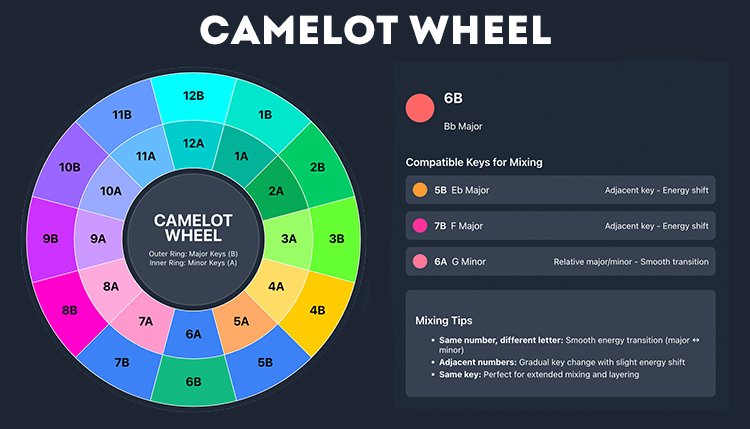
Discover the ultimate Camelot Wheel for DJs and producers. Use our interactive tool to find
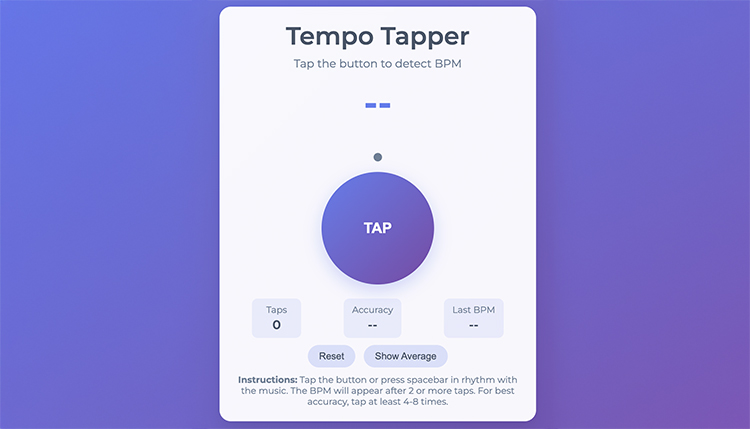
Table of Contents Free Online Tempo Tapper – Instantly Measure BPM with Precision Accuracy Here’s

Table of Contents Create Perfect Playlist Names Instantly with Our AI Playlist Name Generator Ever
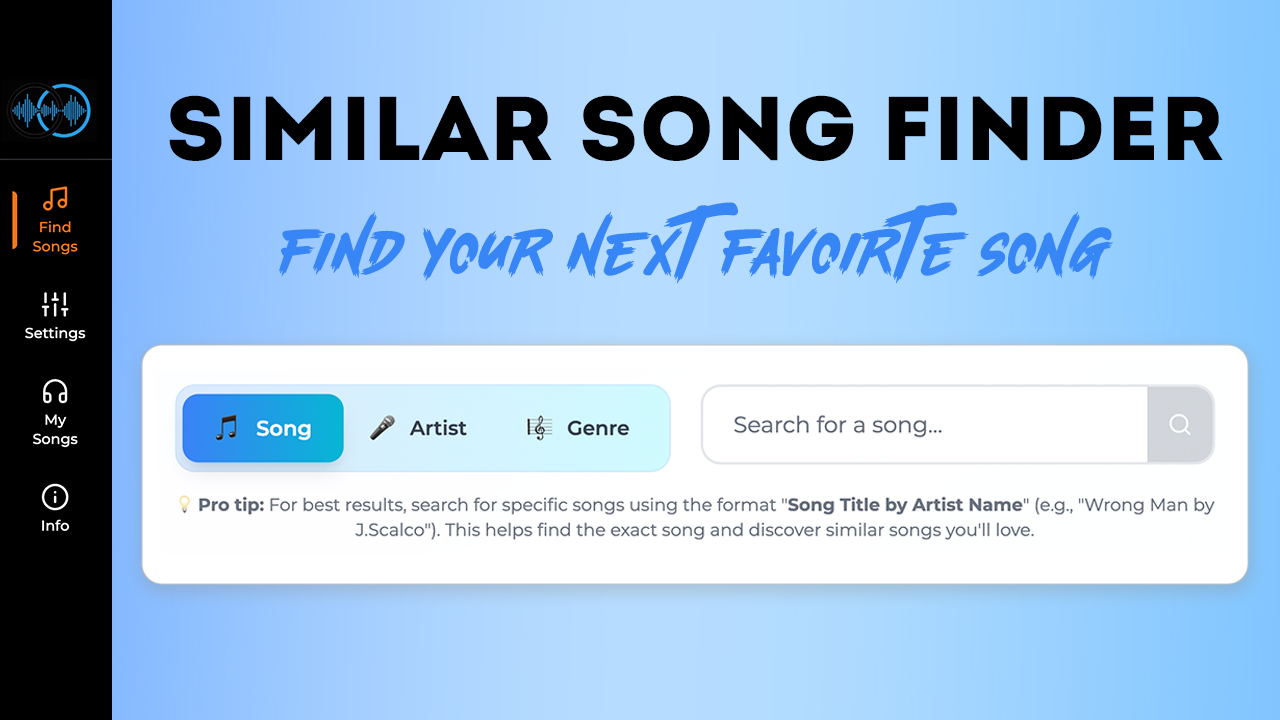
Find songs similar to your favorites with our Similar Song Finder tool. Music discovery, personalized
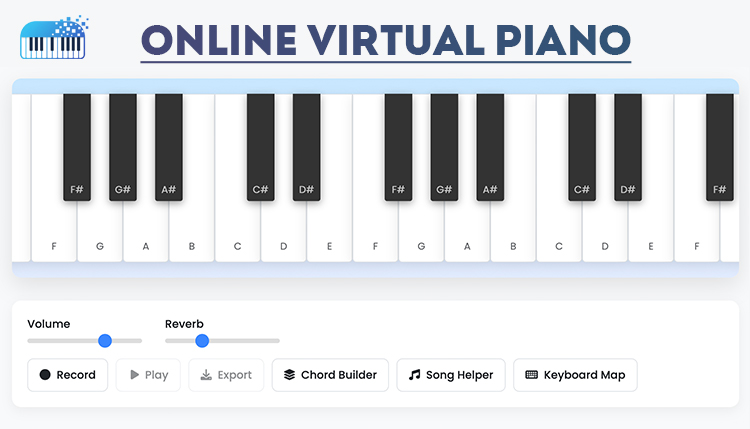
Play and learn piano with our free online virtual piano. Master your first song in
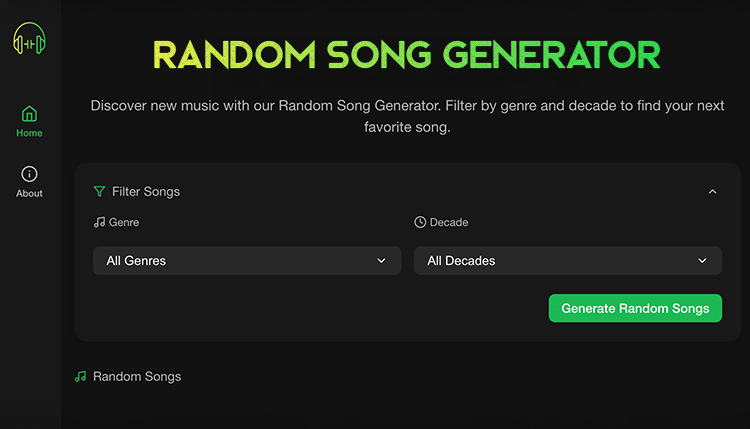
Discover new music instantly with our Random Song Generator! Filter by genre and decade to
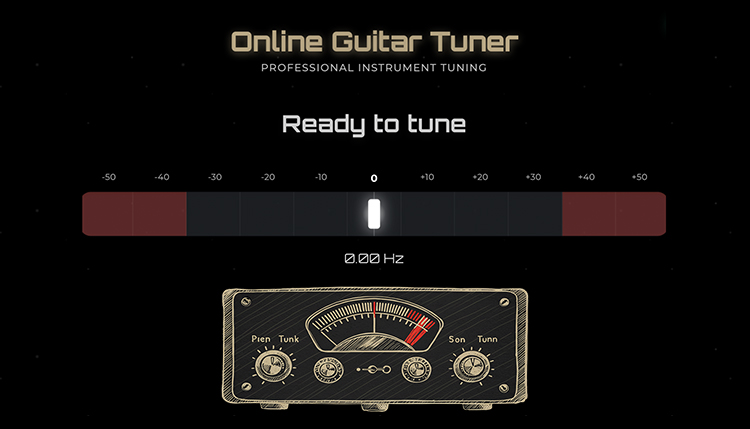
Table of Contents Did you know that even professional guitarists check their tuning multiple times
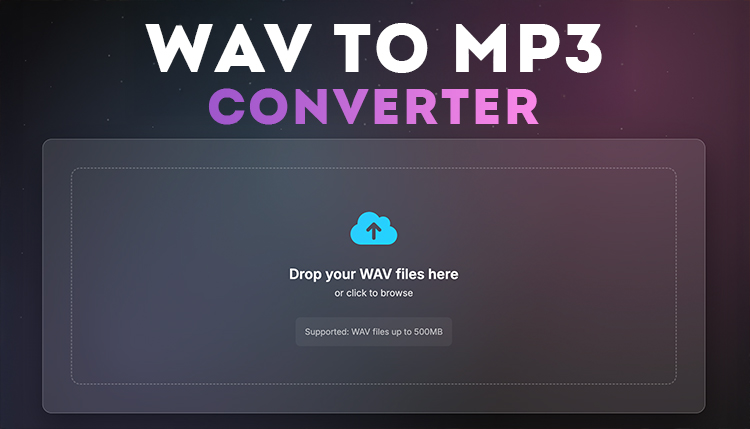
Convert your WAV files to MP3 online instantly and free. Fast, secure, and easy-to-use WAV

Discover our comprehensive collection of 200+ music symbols with clear explanations for beginners and professionals
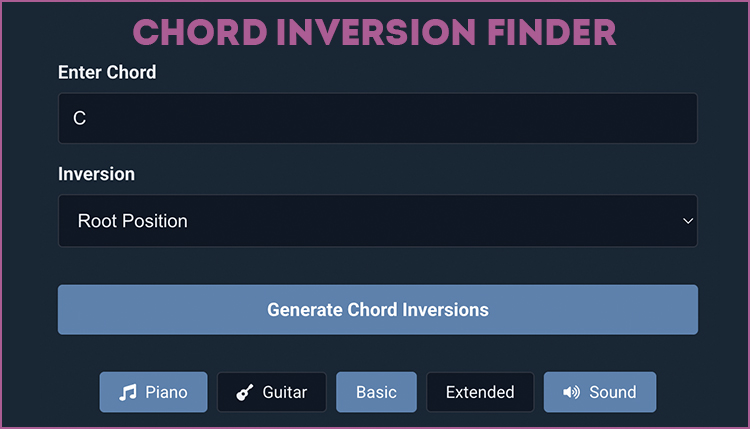
Find chord inversions with our free Chord Inversion Finder tool. Learn how to create rich
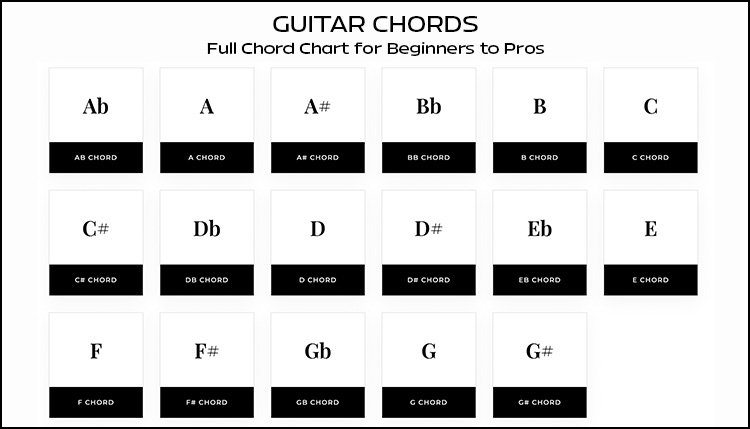
Learn essential guitar chords with clear diagrams, charts, tips for beginners and pros, plus popular

Discover how to find any song by lyrics with our in-depth guide to lyrics search
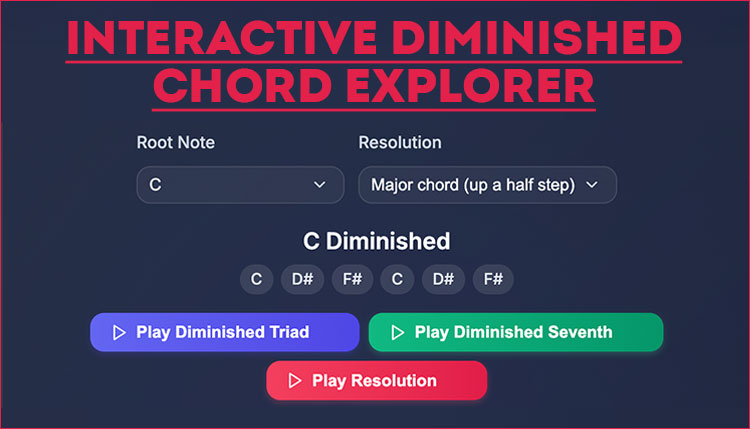
Learn what a diminished chord is, how it sounds, and how to use it in
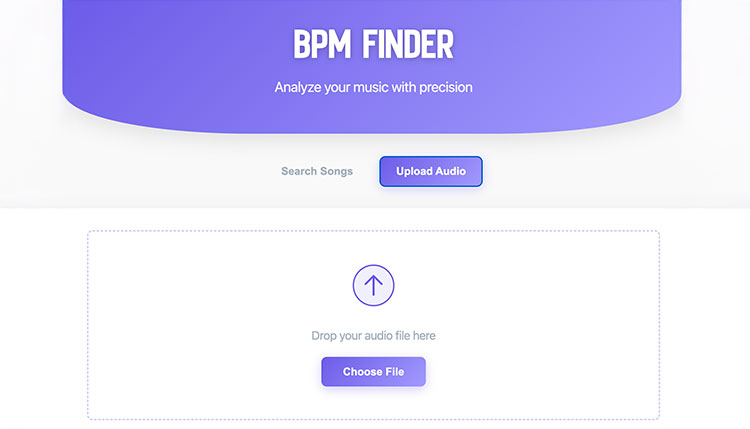
Use our BPM finder to accurately determine song tempos, improve your DJ mixing, produce better
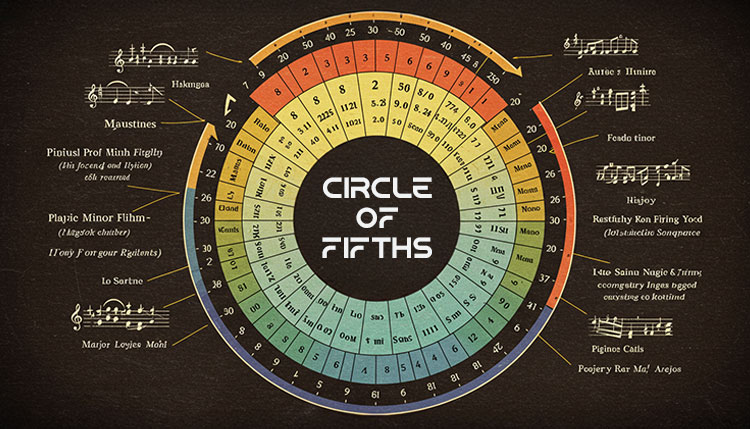
Master the Circle of Fifths with our interactive tool. Learn key signatures, chord progressions, and

Create professional music with our free online Beat Maker. No download required – start producing

Discover everything about virtual drums in 2025! Learn how to play drums online, compare the

Discover the best song key finder in 2025! Learn how to identify musical keys instantly,

Discover how to use a guitar riff generator to create unique, professional-sounding guitar riffs in
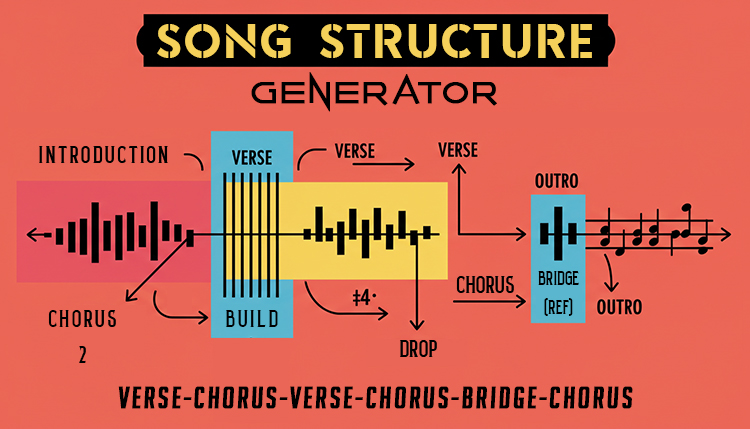
Use our song structure generator to create professional tracks. Learn proven formulas, AI tools, and

Ever wondered if you’re a soaring soprano or a deep bass? Taking a vocal range

Imagine this: you’ve got a melody in your head, but you can’t quite play it
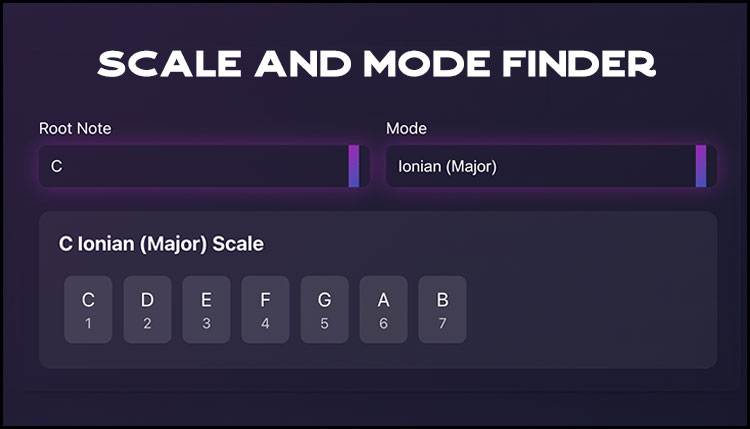
Discover how a Scale Finder helps musicians instantly find scales and modes in any key.
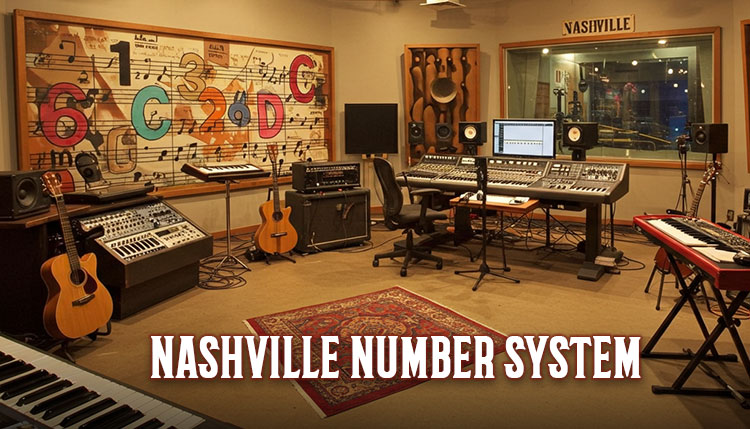
Master the Nashville Number System. Learn how professional musicians use this powerful method for chord
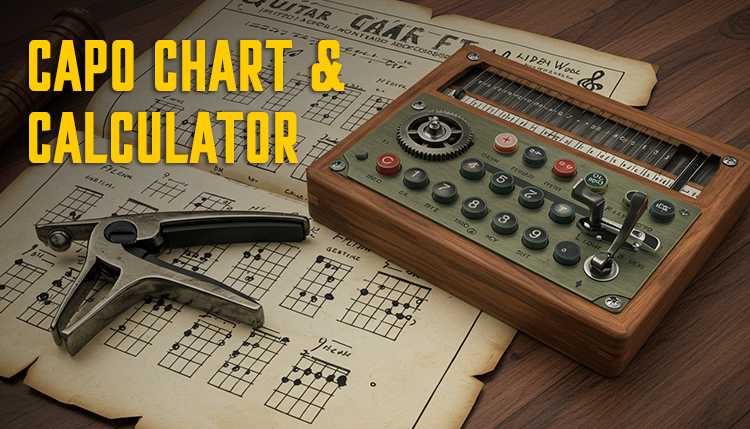
Use our guitar capo chart and placement calculator to transpose guitar chords. Perfect for players
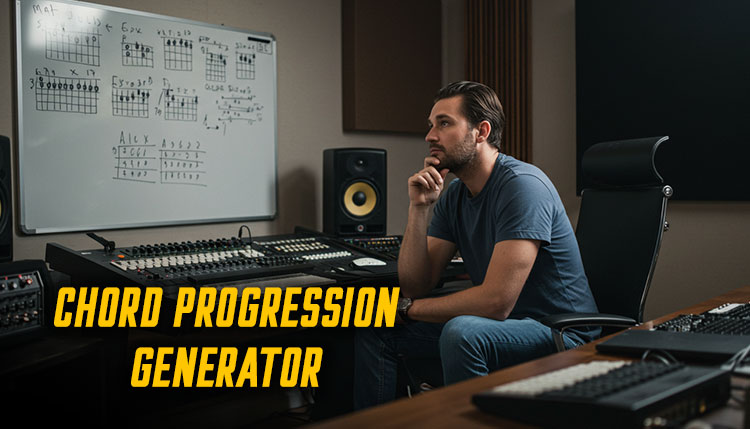
Use our Chord Progression Generator to speed up your songwriting process. This calculator is a

Did you know that 78% of musicians earn over half their income from live performances?

Music is a dance between precision and feel, mathematics and emotion. Whether you’re a jazz
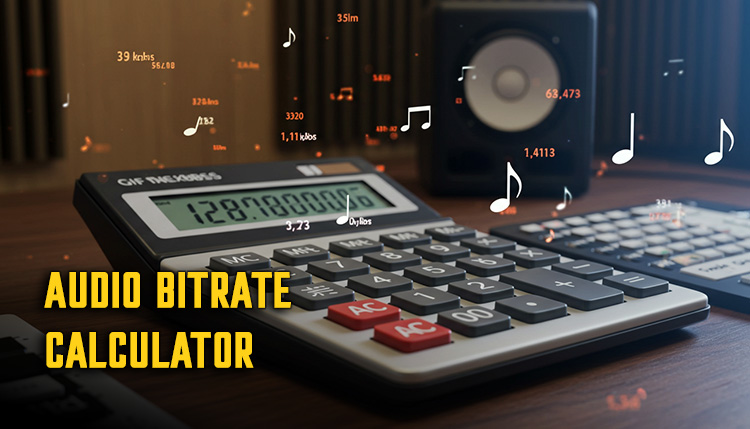
Calculate audio bitrates, file sizes, and streaming quality with our easy-to-use audio bitrate calculator. Learn

Use our free online Lyric Word Count Calculator 2024 to analyze your song lyrics! Get
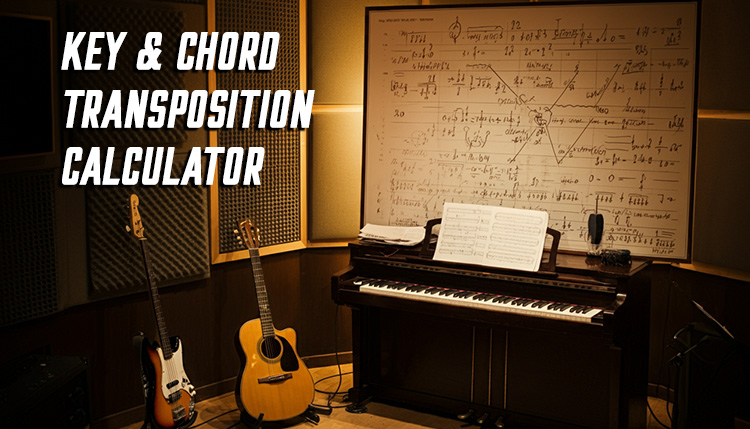
Need to transpose a song to a different key? Our free key and chord transposition

Quickly convert BPM to milliseconds with our easy-to-use calculator! Perfect for musicians, producers, and audio

Calculate musical intervals between notes or find notes from intervals. A free online tool for